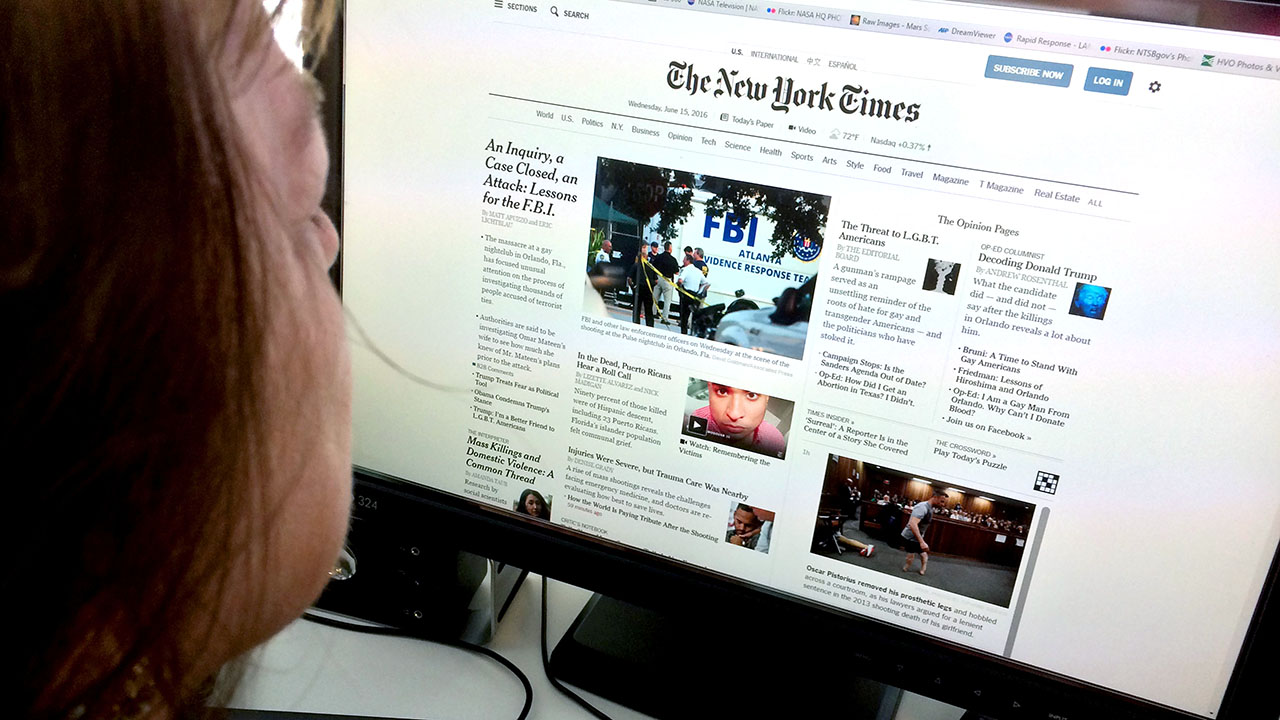The 20-Second Trick For Popular News
The 20-Second Trick For Popular News
Blog Article
The 5-Second Trick For Popular News
Table of ContentsHow Popular News can Save You Time, Stress, and Money.Unknown Facts About Popular NewsNot known Factual Statements About Popular News Little Known Questions About Popular News.
Age is additionally a factor in the way people see the duty of social networks. More youthful social media news consumers are most likely to claim it has impacted their learning right. About fifty percent of social networks news consumers ages 18 to 29 (48%) say news on social media sites makes them far better educated, compared with 37% of those 30 to 49, 28% of those 50 to 64, and 27% of those 65 and older.Journalists evaluate news worths when identifying whether or not to cover an occasion or announcement. Probably the most essential component of newsworthiness is whether or not the information product being interacted impacts an information electrical outlet's target market.
Distance is very important. Journalists have an interest in things that affect their neighborhoods. Research on a state's brand-new tax obligation code most likely will not create the same passion throughout state borders. Occasionally professionals can help localize a larger national story that influences even more than simply a city or state. In these instances, it is essential to be looking for chances where subject specialists can give understanding or where similar tasks might be happening locally.
If you are publishing relevant research, loophole in MarComm prior to the article being released so that the pitch can highlight the most recent aspect of the tale: the publication of the research study. Occasions and announcements that involve high-profile numbers are much more likely to create media insurance coverage. Sees from nationwide numbers typically require months of prep work as a result of awaited area interest.
10 Simple Techniques For Popular News

Human rate of interest elements can add information worth to various other tales that may appear to be lacking in the various other worths. The novelty or curiosity of a circumstance can aid influence whether a news electrical outlet is likely to cover a tale. While this is not an exhaustive list, checking to see if your information thing or occasion has these qualities before calling us will help you determine which aspects hold the most information value.

Popular News Things To Know Before You Buy
There is additionally substantial proof that even more consumers additional reading might start to pay for information in the futureif publishers can recognize them and serve them well. Half of those that do not pay review for news proactively seek news and appear like customers in numerous methods. Popular News. And virtually 2 in 10 of those who do not register for news currently show they are inclined to begin to pay in the future
We after that ask a collection of questions to establish whether people pay for specific sorts of news sources. We asked individuals to call the resources they use most oftenwhether they pay for them or nothow they use them, the certain points they consider important regarding them, and some associated inquiries concerning the cost and value of that source.
People are attracted to information in basic for 2 factors over others: A need to be informed people (paper clients particularly are extremely inspired by this) and since the magazine they sign up for excels at covering particular subjects regarding which those customers specifically care. While there are a host of factors, the No.
Greater than 4 in 10 additionally cite the fact that good friends and family sign up for the exact same item. Even more than a 3rd of individuals state they originally subscribed in reaction to a price cut or promo. In print, individuals likewise are moved heavily to subscribe to obtain promo codes that conserve them cash, something that has untapped ramifications in digital.
Popular News Things To Know Before You Get This

We asked every person that told us they have a routine complimentary resource of news exactly how most likely they would certainly be to pay for it. More than a quarter (26 percent) state they would certainly go to the very least somewhat likely to begin paying for itand 10 percent are really or extremely likely. These likely payers have a tendency to be information candidates, and they also have a tendency to be people that currently spend for an information registration in addition to the source they Recommended Site comply with free of charge.
Of those who do pay, 54 percent sign up for papers in print or digitally, which stands for 29 percent of Americans overall. Many of them purchase a print publication along with their newspaper and spend for 2 to four information resources in total, some a lot more. And while 53 percent are long-time customers (5+ years), greater than a quarter (27 percent) have actually bought their paper registration within the past year.
Few print clients assume it likely they will switch over to a digital-only registration in the future, and over half of those that choose electronic have actually never paid for a print variation of the very same source. Popular News. Completely 75 percent of paper payers state they largely read the paper in print, while 21 percent are mainly electronic individuals, and 4 percent explain themselves as equally split
Report this page